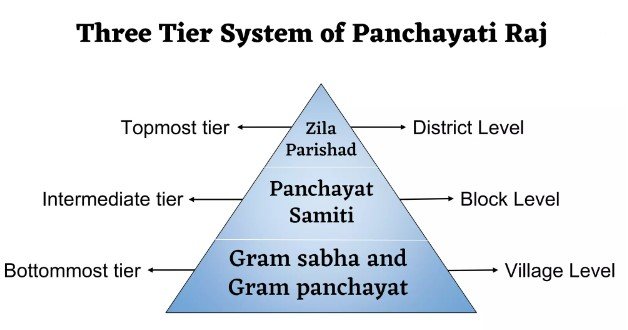AWIP, GS P5 (History, Polity, Governance...), Indian Polity & The Constitution of India
Q. Examine the autonomy and control over Panchayati Raj Institutions. What suggestions would you like to give to make them more effective, creative and receptive with special reference to Uttar Pradesh.
Posted on by admin
Examination of Autonomy and Control over Panchayati Raj Institutions
Autonomy and Control:
Legal and Constitutional Framework
- 73rd Amendment Act (1992): Introduced the Panchayati Raj system in India, ensuring a three-tier system (Gram Panchayat, Panchayat Samiti, and Zila Parishad) with elected representatives.
- State Legislations: States, including Uttar Pradesh, have their own specific acts and rules governing Panchayati Raj Institutions (PRIs).
Administrative Autonomy
- Administrative Control: PRIs have varying degrees of administrative autonomy, often limited by state government oversight.
- Functionaries: State-appointed officers often have significant control over PRI activities, limiting the autonomy of elected representatives.
Financial Autonomy
- Funds and Grants: PRIs depend heavily on state and central government grants, limiting their financial independence.
- Revenue Generation: Limited capacity for local revenue generation through taxes, fees, and other sources.
Functional Autonomy
- Devolution of Powers: Inadequate devolution of powers and functions to PRIs, with many subjects still under state control.
- Implementation of Schemes: PRIs are often implementers of state and central schemes rather than autonomous planners and executors.
Suggestions for Enhancing Effectiveness, Creativity, and Receptivity
- Strengthening Financial Autonomy
- Increased Grants: Ensure timely and adequate grants from state and central governments.
- Local Revenue Generation: Empower PRIs to levy and collect local taxes and fees. Introduce innovative revenue-generating mechanisms.
- Financial Management Training: Provide training to PRI members on financial management and budget planning.
- Capacity Building and Training
- Training Programs: Regular training and capacity-building programs for PRI members on governance, administration, and planning.
- Technical Support: Provide technical support and resources for efficient functioning.
- Devolution of Powers
- Empowerment of PRIs: Transfer more subjects and functions from the state list to the PRIs.
- Autonomy in Planning: Allow PRIs to plan and implement local development projects independently.
- Improving Administrative Efficiency
- Streamlining Procedures: Simplify administrative procedures and reduce bureaucratic red tape.
- Decentralization of Administration: Decentralize administrative functions to ensure quicker decision-making and implementation.
- Enhanced Community Participation
- Engagement Mechanisms: Create mechanisms for greater community participation in decision-making processes.
- Transparency and Accountability: Ensure transparency and accountability through social audits and public disclosure of information.
- Use of Technology
- Digital Governance: Implement e-governance initiatives to improve efficiency and transparency.
- Data Management: Use data analytics for better planning and monitoring of projects.
- Collaboration and Partnerships
- Public-Private Partnerships: Encourage partnerships with private sector and civil society organizations for resource mobilization and expertise.
- Inter-Institutional Collaboration: Foster collaboration between PRIs and other local institutions for comprehensive development.
- Monitoring and Evaluation
- Performance Metrics: Develop clear performance metrics and regular evaluation mechanisms for PRIs.
- Feedback Systems: Establish robust feedback systems to incorporate suggestions and rectify issues promptly.
Special Reference to Uttar Pradesh
In Uttar Pradesh, specific measures can be adopted to make PRIs more effective:
- Tailored Training Programs: Develop training programs specifically addressing the unique socio-economic and cultural contexts of Uttar Pradesh.
- Enhancing Women’s Participation: Encourage and support greater participation of women in PRIs through reservation and capacity-building initiatives.
- Addressing Regional Disparities: Implement targeted interventions to address regional disparities within the state, ensuring equitable development.
- Strengthening Gram Sabhas: Empower Gram Sabhas to play a more active role in local governance, ensuring grassroots democracy.
- Innovative Revenue Models: Explore innovative revenue models suitable for the diverse economic landscape of Uttar Pradesh, such as tourism fees in heritage areas or market fees in agricultural zones.
By focusing on these areas, PRIs in Uttar Pradesh can become more autonomous, effective, creative, and receptive, leading to improved local governance and development.


